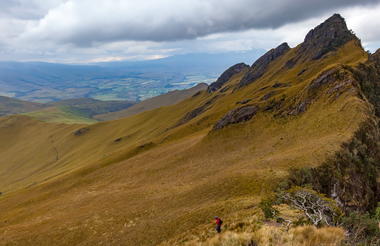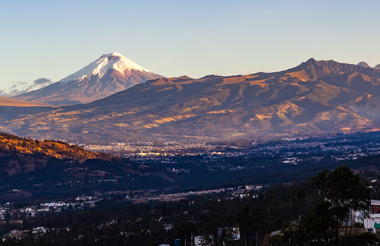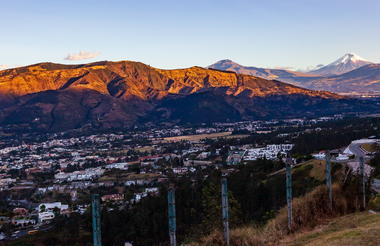Quito, the capital of Ecuador, lies on the slopes of the Andes’ mighty Pichincha volcano in the Guayllabamba river basin. The city’s Old Town is its main attraction - one of the most well preserved in Latin America and the first-ever UNESCO heritage site. Wander among ancient, colourful streets; pop into glorious historic churches; or spend an afternoon browsing the vibrant Mercado (markets) and learning about the unique, traditional Ecuadorian Sierra culture. Other bucket list items in Quito include a visit to the impressive Casa Museo Guayasamín; the Museo de la Presidencia which provides insight into Ecuador’s history; and a climb up the iconic towers of the Basilica. Numerous gorgeous public parks and a thriving and exciting culinary scene complete the package.

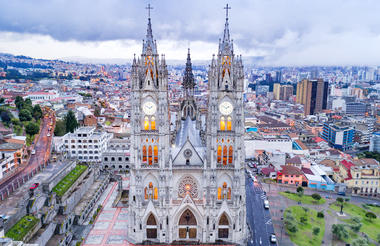
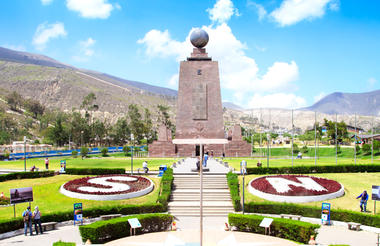
The Amazon Jungle is the stuff of legends. Making up roughly 50% of the world’s rainforests and featuring an incredible diversity of flora and fauna – including such rare and exotic creatures as jaguars, puma, sloths, anacondas and capybaras, not to mention an abundance of avian species – it is currently recognised as one of the New7Wonders of Nature. The Amazon extends across no less than eight South American nations, but highlights specific to the Ecuadorian Amazon include the Cuyabeno Reserve, where visitors can experience a combination of jungle trails rich with bird and animal life, indigenous settlements where shamanism is still an integral part of the tribal culture, and jungle eco-lodges that give guests the opportunity to get up close and personal with the natural environment and its inhabitants.



Puembo is a tranquil, pretty farming town located east of Quito, in the district of the same name, set ten minutes from the international airport. It functions as one of the best bases for hiking the magnificent inactive volcanoes in the area, such as Ilalo and Coturco. Ilalo, a striking triangular-shaped peak, is decorated with numerous wonderful hot springs, and there are several excellent spas to enjoy. Coturco is a large landmark volcano that can be seen from miles away, swathed in the beautiful dense pine forest, and offers both challenging hikes and a road to the summit for spectacular views. History and architecture enthusiasts visiting Puembo should make sure to see the Old Chapel, and head to Quito for fascinating heritage buildings and museums. Puembo is also known for its rich traditions and holds a wonderful celebration over Holy Week.


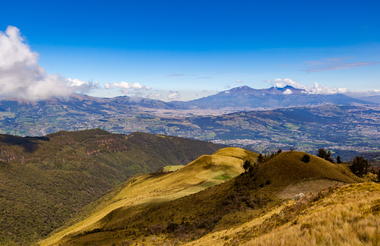
The scenic Ecuadorian islet of Isla Lobos is set off the northwestern coast of San Christobel Island, just a few kilometres from the fishing town of Puerto Baquerizo Moreno. This tiny flat island serves as a beautiful sanctuary and is an excellent destination to spot an array of protected species and wildlife including the blue-footed boobies, frigate birds, marine iguanas, fur seals, tortoises and sea lions. Tourists can look forward to close encounters with several aquatic species such as manta rays, red crabs, schools of fish, and hammerhead sharks while snorkelling. Don't miss the opportunity to explore the white-sand beaches lapped by crystal-clear turquoise waters, snorkel through the underwater wonderland off the shores of the beautiful Playa Ochoa, and discover the botanical and ecological wonders of Lobos.
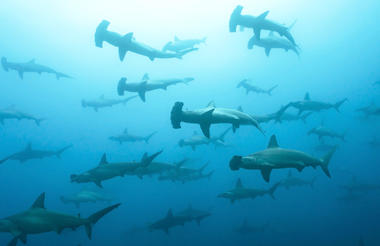
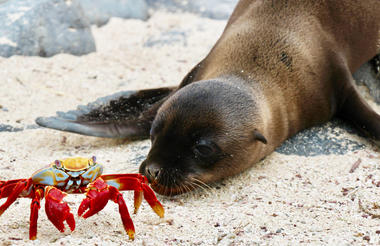
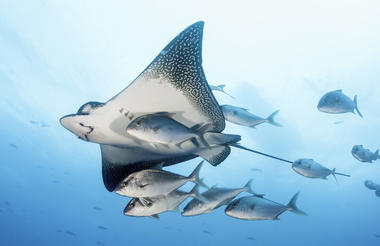
San Cristóbal is the easternmost island in the Galapagos archipelago as well as the most populated. Famous for its natural attractions, the island also boasts some wonderful shopping and dining opportunities as well as a local airport. Take a break from snorkeling and hiking to enjoy the best Ecuadorian cuisine, or admire some of the exquisite artwork and designs at local galleries and markets. Must-see attractions include the Galapaguera Tortoise Reserve; the Interpretation Center (which provides important background information on the Galapagos); and Puerto Grande, a protected cove on the north-western side of the island boasting a magnificent white sandy beach - ideal for a peaceful walk, swim or photography sesssion.



As previously described



Floreana Island is located in the far southern portion of the Galapagos archipelago. As the first of the islands to support permanent human habitation, Floreana boasts a rich heritage complete with tales of buccaneers, pirates, whalers, convicts, and colonists. Visitors are invited to follow in the footsteps of whalers in the 1700s and drop a postcard into the famous "post office" barrel. At the island's northern tip is Punta Cormorant, with its two beaches, one of which forms a nesting site for Galapagos green turtles and is aptly named "Flour Beach" for its soft, powder-white sand. Between these two beaches lies a salt lagoon frequented by long-legged greater flamingoes and other shorebirds. Floreana's unique human history, fascinating geology, remarkable wildlife, and the little village of Puerto Velasco Ibarra, offering excellent lodging and food, make an ideal base for visitors looking to explore these unforgettable islands.



As previously described



The island of Santa Cruz is home to Puerto Ayora, the largest and most developed town in the Galapagos. Although many travellers use it as a springboard to explore the more remote surrounding islands, those who venture deeper will find that Santa Cruz has much to offer in its own right. With numerous visitor sites, easily accessible beaches, and remote highlands at its heart, the island serves as an excellent base for adventure. Its most renowned attraction, the Charles Darwin Station, features an impressive turtle breeding programme and fascinating displays on the conservation of the Galapagos’ unique biosphere. Visitors can also swim or snorkel at the island’s magnificent beaches, where white sand and turquoise waters are alive with pelicans, blue-footed boobies, and marine iguanas.
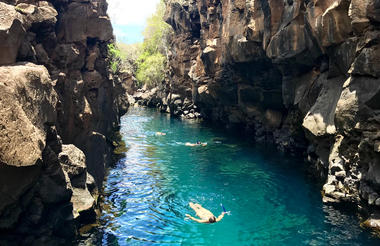
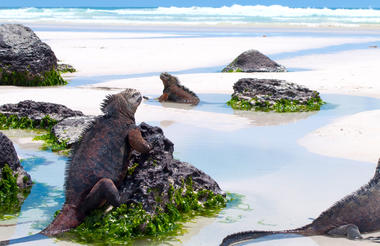
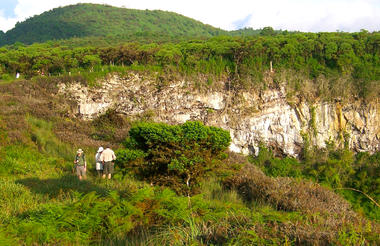
As one of the world’s foremost destinations for wildlife-viewing, this volcanic islet in the Galápagos Islands group makes an ideal stomping ground for avid nature enthusiasts. Charles Darwin was famously inspired to write his seminal work, ‘The Origin of Species’, after witnessing the veritable treasure trove of natural wonders exhibited on this extraordinary archipelago. Darwin was so intrigued by the unique landscapes, colourful rock formations and exotic wildlife of these islands that he named one of its most unusual islets after his close friend and fellow naturist, Sir Bartholomew James Sulivan. Today, Bartholomew Island is no less fascinating that is was in 1835 when Darwin first arrived. Visitors typically swim and snorkel around the iconic Pinnacle Rock where they are treated to an impressive natural world of penguins, marine turtles, white-tipped reef sharks, and other marine creatures, many of which are found nowhere else on earth.



Darwin Bay, located on Genovesa Island in the Galapagos, offers visitors a unique opportunity to explore its stunning natural beauty. Guests can enjoy activities such as snorkeling, bird watching, and hiking along the scenic trails. Notably, Darwin Bay is home to a diverse array of wildlife, including red-footed boobies, frigatebirds, and sea lions, making it a paradise for nature enthusiasts.
Resting approximately 25 km northeast of Santa Cruz Island, in the exquisite Galapagos archipelago, the elongated shield volcano of Santiago Island, also known as San Salvador Island or James Island, is dotted with Holocene pyroclastic cones. The island’s best site is undoubtedly Puerto Egas where you will find a long, lava shoreline where eroded rock formations are home to an impressive variety of wildlife including an abundance of marine iguanas and fur seals. While geology aficionados should head to Sullivan Bay to witness its black lava flow covered with lava bubbles and tree-trunk moulds, diving enthusiasts can enjoy the renowed dive site of Cousin's Rock, a triangular rock that rises about 10 m (33 ft) out of the water and is made up of many layers of volcanic rock. Don’t miss Espumilla Beach which is fringed by a spectacular palo santo forest that shelters nesting Galápagos green turtles.



As previously described



As previously described

Despite its small size, North Seymour Island, in the Galapagos archipelago, is undoubtedly worth a visit for its astonishing abundance of wildlife. Visitors to the island are typically treated to the sight of sea lions riding waves all the way into shore, marine iguanas basking in the sun, and flocks of pelicans and swallow-tailed gulls feeding just off the coast. The island is also renowned as a natural haven for one of the most sought-after residents in the Galapagos Islands, the Blue-Footed Boobie. During mating season, the island is an ideal place to witness the intriguing mating rituals for which these birds are famous. With its extraordinary profusion of wildlife and close proximity to Santa Cruz, North Seymour Island makes an ideal destination for an adventurous day tour.



As previously described



A pristine piece of land nestled between the Baltra and North Seymour islands, Mosquera Island is a tiny, low-lying islet covered by black lava rocks, sparse vegetation and a white sandy beach lapped by the vivid blue waters of the Pacific. Measuring just 160-metres across and around 600 metres long, Mosquera Island is the petite dwelling place of one of the largest colonies of sea lions in the Galapagos. Marine iguanas, blue-footed boobies, Sally Lightfoot crabs, and Lava Gull also inhabit the shore, and there have been occasional orca whale sightings off the coast. The abundance of marine life in the coral reefs attracts snorkellers to the Galapagos rays, sea turtles, reef sharks, barracudas, moray eels and schools of colourful fish, including hawkfish.



As previously described
